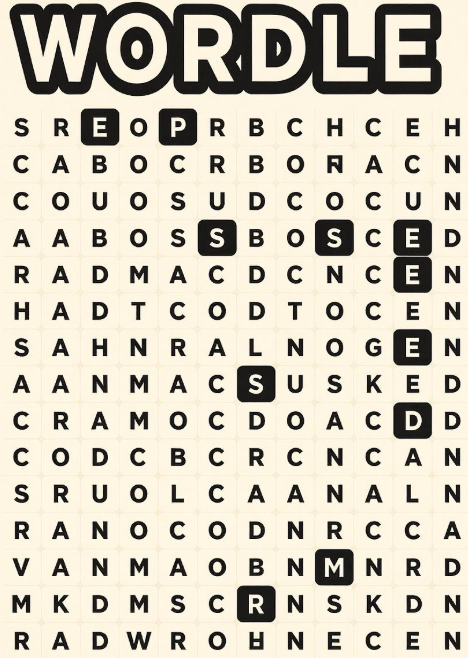Picture this: You’re sitting at your desk, staring at a blank screen, trying to piece together a video for your business. You’ve got clips scattered across three different apps, your email template is broken, and you’re pretty sure your brand colors are slightly off. Sound familiar? Well, Canva just decided to fix all of that in one massive swoop.
On October 30, 2024, Canva dropped what they’re calling their biggest product launch ever – the Creative Operating System. And honestly? It’s not just marketing hype. This thing is massive.
From Design Tool to Creative Powerhouse
Let me break this down in simple terms. For over a decade, Canva has been that friendly design tool where anyone could whip up a social media post or a quick presentation. It was great for beginners but lacked the punch that professional designers needed. That’s all changed now.
The new Creative Operating System isn’t just an update. It’s a complete reimagining of what Canva can do. Think of it as Canva growing up and deciding it wants to compete with the big players like Adobe and Figma – but with one key difference: it’s actually trying to make things easier, not more complicated.
The AI That Actually Understands Design
Here’s where things get really interesting. Canva has built something they call the Canva Design Model, and they’re claiming it’s the world’s first AI specifically trained to understand design. Not just slap images together, but actually understand how design works – the layout, the hierarchy, the spacing, all of it.
What does this mean for you? Instead of getting a flat image you can’t edit (like most AI tools give you), you get a fully editable design that you can tweak to your heart’s content. Need a social media post? Type what you want, hit generate, and boom – you’ve got something you can actually work with, not just a pretty picture you’re stuck with.
The AI is now baked into everything. There’s a feature called “Ask Canva” where you can literally tag Canva like you would a coworker and ask for design advice. “Hey Canva, does this look too cluttered?” or “Can you suggest a better layout?” It’s like having a designer sitting next to you, except they never get tired or ask for coffee breaks.
Video Editing That Doesn’t Make You Want to Scream
If you’ve ever tried editing video in Canva before, you know it was… let’s say “basic.” The new Video 2.0 is a complete overhaul. They rebuilt it from scratch with a proper timeline, professional-grade tools, and templates specifically designed for TikTok, Instagram Reels, and YouTube Shorts.
But here’s the kicker – there’s a feature called Magic Video that can automatically assemble your video clips based on a short text description. You provide the clips, tell it what kind of video you want, and it puts it together. Is it perfect? Probably not. But it’s a hell of a starting point that saves you hours of tedious work.
Forms, Emails, and Everything In Between
Remember when Canva was just for making pretty pictures? Those days are long gone. Now you can create interactive forms right inside your designs. Surveys, sign-ups, quizzes – all of it. The responses automatically get collected in Canva Sheets, which you can then use to build data-powered pages with Canva Code. No third-party integrations needed.
And email design? Finally. After who knows how many requests, Canva now lets you design marketing emails that look good and actually work. You can preview them, test them, and export clean HTML that works in any email platform. No more wrestling with clunky email builders or hiring someone to code your newsletters.
The Marketing Piece That Ties It All Together
Here’s something most people aren’t talking about enough: Canva Grow. This isn’t just a design tool anymore – it’s becoming a full marketing platform.
Canva Grow can scan your website, learn your brand’s voice, tone, and colors, then generate multiple ad variations for you. And here’s the crazy part – you can publish those ads directly to Meta (Facebook and Instagram) and track how they’re performing, all without leaving Canva. The AI even suggests improvements based on performance data.
For small businesses and solo entrepreneurs, this is huge. You’re getting enterprise-level marketing tools without the enterprise-level price tag or complexity.
The Brand Kit That Actually Makes Sense
If you’ve ever worked on a team where nobody can agree on which shade of blue is the “right” brand blue, you’ll appreciate this. The new Brand Kit homepage is like a command center for your brand. Everything – logos, templates, colors, fonts, tone of voice guidelines – lives in one place.
The best part? Canva’s AI automatically applies your brand styling to new designs. No more manually checking if someone used the wrong font or slightly-off color. The system keeps everything consistent, which is a godsend for larger teams where brand consistency usually goes to die.
The Affinity Bombshell
Remember when Canva acquired Affinity earlier in 2024 for around $380 million? People wondered what they’d do with it. Well, here’s the answer: they’re making it completely free. Forever.
Let me repeat that: Affinity, which includes professional-grade photo editing, vector design, and layout tools that rival Adobe Photoshop and Illustrator, is now free for everyone. Not a trial. Not a limited version. The whole thing.
This is a massive middle finger to Adobe’s subscription model, and frankly, it’s about time someone did it. You can create detailed, professional work in Affinity, then move it seamlessly into Canva for collaboration and publishing. For designers who couldn’t afford Adobe’s increasingly expensive subscriptions, this is genuinely life-changing.
What This Means for Different Users
For Small Businesses: You no longer need a design agency, a video editor, an email marketing specialist, and a social media manager. One person with Canva can handle a lot of this now. That’s not hyperbole – it’s actually possible.
For Marketing Teams: Your workflow just got compressed. Fewer apps to juggle, fewer exports, fewer handoffs. Design, collaborate, publish, and measure – all in one place.
For Students and Creators: You have access to professional tools that used to cost hundreds of dollars a month. The playing field just got a lot more level.
For Professional Designers: Affinity being free means you have serious tools without the Adobe tax. And the Canva integration means you can focus on the creative work while the platform handles the tedious stuff.
The “Imagination Era” Philosophy
Canva’s CEO, Melanie Perkins, keeps talking about moving from the “Information Era” to the “Imagination Era.” It sounds like marketing speak, but there’s something to it.
We’ve spent the last few decades making information more accessible. Now we’re at a point where anyone can look up anything, but the real challenge is creating something new with that information. Canva’s bet is that by removing the technical barriers – the complicated software, the need to code, the expensive subscriptions – more people can focus on the creative part.
The Concerns Nobody’s Talking About
Look, it’s not all sunshine and roses. When one platform tries to do everything, there are trade-offs. Will Video 2.0 really compete with Premiere Pro? Probably not for complex projects. Is the AI-generated design going to replace a skilled designer’s eye? Definitely not.
There’s also the question of what happens when one company controls so much of the creative workflow. Canva’s growing influence means more people are locked into their ecosystem. That’s convenient until it isn’t.
And let’s be real about the AI: it’s trained on content from creators who opted in (Canva has a $200 million creator fund for this), but AI in creative work is still a touchy subject for many designers.
Who This Really Helps
The biggest winners here are small teams and solo creators who’ve been cobbling together workflows with half a dozen different apps. If you’re a freelancer juggling Premiere Pro, Photoshop, MailChimp, and Google Forms while praying it all works together, Canva just handed you a unified solution.
For larger companies with established workflows and dedicated specialists, Canva’s value is different – it’s more about speed and consistency than replacing existing tools entirely.
The Competition Just Got Real
Adobe and Figma are probably looking at this launch and feeling a bit nervous. Adobe’s been coasting on its industry-standard status for years, raising prices while innovation slowed. Figma’s been the darling of the design world but remains complex for non-designers.
Canva’s approach is different: make it powerful enough for professionals but simple enough that anyone can use it. Oh, and make the professional stuff free. That’s a direct challenge to the status quo.
What’s Next?
This isn’t the end – Canva’s making it clear this is just the beginning. They’re expanding integrations (currently you can access Canva’s AI through ChatGPT, Claude, and Gemini), adding more marketing channels beyond Meta, and continuing to build out the AI capabilities.
The question is whether they can maintain the simplicity that made them popular while adding all this complexity. It’s a tough balance to strike.
Should You Jump In?
If you’re already using Canva, you’d be crazy not to explore these new features. The video editor alone is worth checking out, and if you’ve been paying for email marketing or form tools, you might be able to cancel some subscriptions.
If you’ve never used Canva because you thought it was “too basic,” now’s the time to give it another look. With Affinity integration and the AI tools, it’s a completely different beast.
For professional designers skeptical of Canva, the free Affinity suite is worth trying. You might be surprised.
Insights
Canva’s Creative Operating System isn’t perfect, but it’s ambitious in a way we don’t see often enough in tech. Instead of incrementally improving features or slapping “AI-powered” on existing tools, they’ve rebuilt their entire platform from the ground up with a clear vision: make professional creativity accessible to everyone.
Whether that vision fully succeeds remains to be seen. But right now, if you need to create videos, design emails, build forms, maintain brand consistency, and run marketing campaigns, Canva’s offering all of that in one place. For free or at a fraction of what you’d pay elsewhere.
That’s not just an update. That’s a statement. And it’s one that Adobe, Figma, and the rest of the creative software industry can’t ignore.
The design world just got a lot more interesting. And a lot more accessible. Whether you’re a seasoned pro or someone who just wants to make their side hustle look more professional, Canva’s Creative OS is worth your attention.
Now if you’ll excuse me, I have some Affinity tools to download. For free. Because apparently that’s a thing now.



